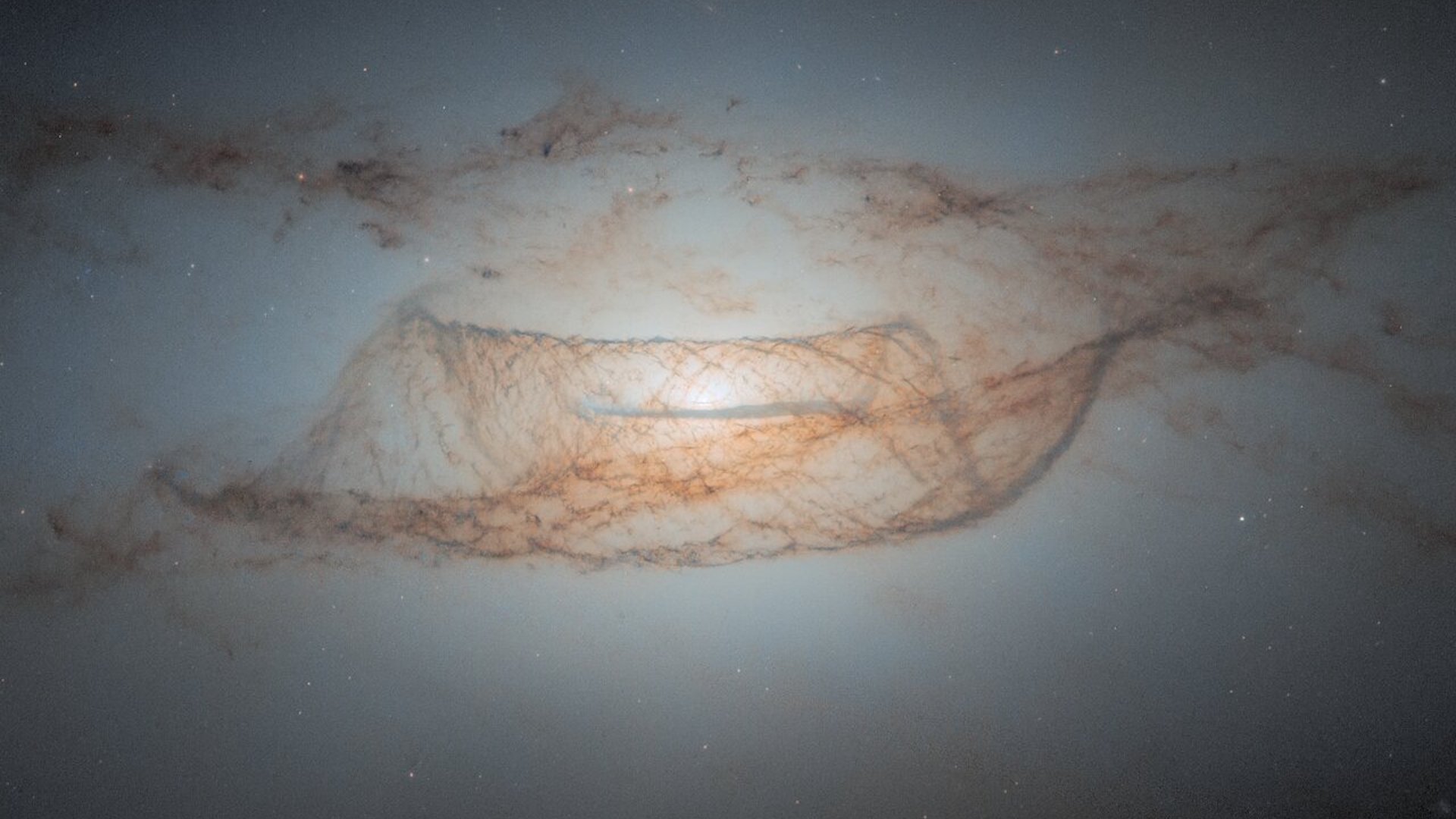
What it is: NGC 4753, a lenticular galaxy
Where it is: 60 million light-years from Earth in the constellation Virgo
When it was shared: May 13, 2024
Why it's so special: This is the best-ever image of NGC 4753, a galaxy with uniquely distorted dust lanes that have led some people to nickname it the "train-wreck galaxy."
This new image from the Hubble Space Telescope, published hot on the heels of a similar image taken using the Gemini South telescope in January, shows NGC 4753 in more detail than ever before. A bright white core sits at the center of the image, with dark-brown dust lanes creating an almost web-like tunnel or tent around its nucleus.
NGC 4753 is a lenticular galaxy — a cross between a spiral galaxy like the Milky Way and an elliptical galaxy, according to NASA. Lenticular galaxies have a central bulge and disk — just like a spiral galaxy — but they appear to lack spiral arms teeming with stars. Instead, like elliptical galaxies, they have stars orbiting in a featureless pattern. Those scattered stars are often older, with few new stars being born.
Scientists have suggested that NGC 4753's unique look could simply be thanks to our view of it; if viewed directly from above, it may look identical to a spiral galaxy, according to the National Science Foundation.
It's thought that NGC 4753 merged with a dwarf galaxy about 1.3 billion years ago, which could explain where the dust lanes around its nucleus came from.
NGC 4753 was first discovered by astronomer William Herschel in 1784, and it has since been the location of two known supernova explosions. Both of those explosions were very rare Type Ia supernovas, which are when binary star systems consisting of a white dwarf star (the compact remnant of a sun-like star) and a larger companion star explode. Because these kinds of supernovas shine at exactly the same intrinsic brightness, astronomers use them to measure distance in the universe. They can even be used to measure how fast the universe is expanding.







